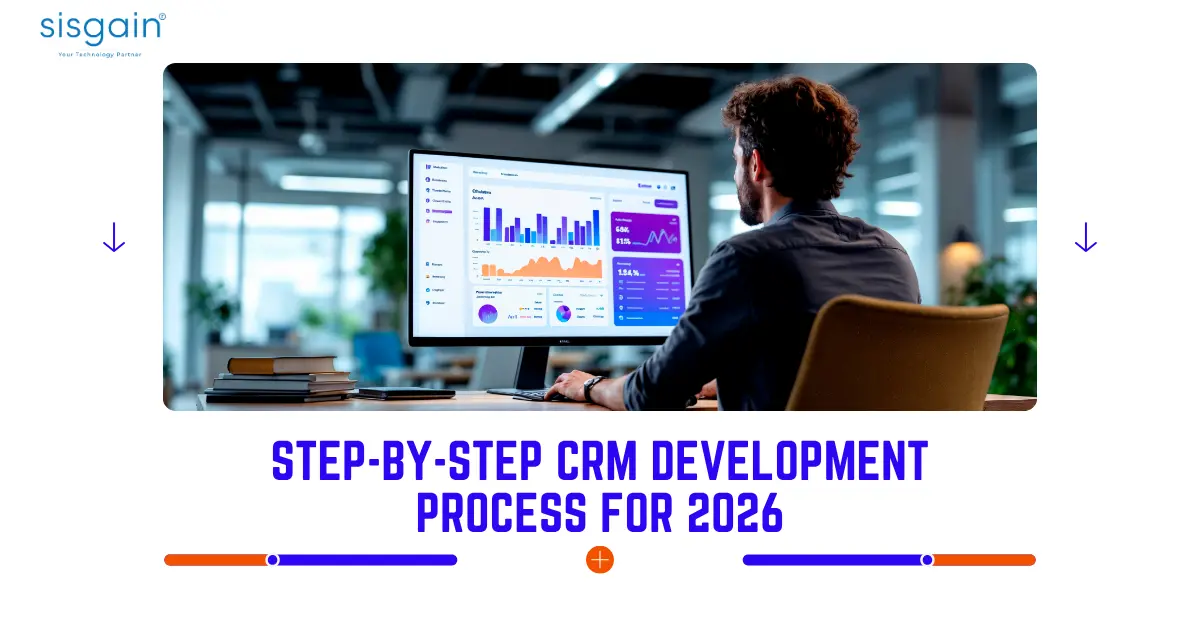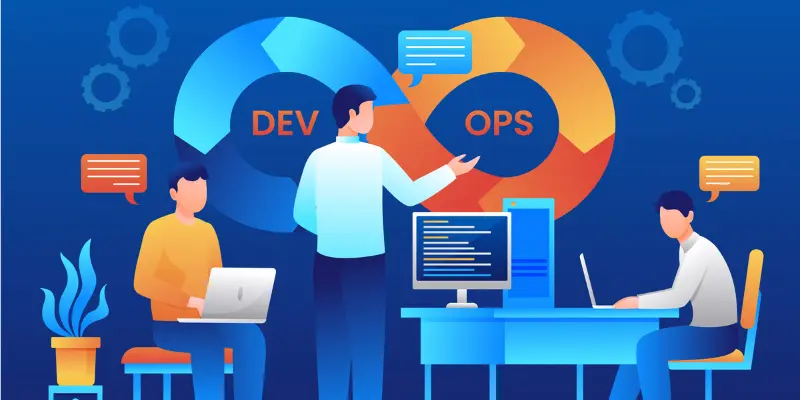Sales Team
Project quotes, partnerships, implementation

Imagine a world where your customer interactions aren't just tracked—they're anticipated, personalized, and automated with pinpoint accuracy. In 2026, this isn't science fiction; it's the new standard for CRM development. Powered by artificial intelligence (AI), hyper-automation, and hyper-personalization, CRM systems are undergoing a seismic shift. Businesses that once relied on rigid, off-the-shelf solutions are now demanding custom-built platforms that adapt in real-time to customer behaviors and market dynamics.
At its core, CRM development refers to the end-to-end process of designing, coding, and deploying a customer relationship management system tailored to an organization's unique needs. Unlike simple customizations—tweaking existing tools—this involves building from the ground up, incorporating proprietary data flows, seamless integrations, and forward-thinking features like predictive analytics. Why the rush to custom? Off-the-shelf CRMs often lock you into inflexible templates, leading to integration headaches and missed opportunities. In contrast, bespoke systems deliver ROI through streamlined operations and deeper insights.
The numbers underscore the urgency: The global CRM software market, valued at $73.4 billion in 2024, is projected to surge to $163.16 billion by 2030, growing at a compound annual growth rate (CAGR) of 14.6%. This boom is fueled by digital transformation across sectors, where AI integration alone could boost sales productivity by 14% and reduce administrative time by 21%, per recent Gartner forecasts.
Industries at the forefront include healthcare, where secure patient tracking ensures HIPAA compliance; real estate, for dynamic lead nurturing; and e-commerce & retail, optimizing personalized shopping experiences. For instance, healthcare software developers are embedding AI for predictive care pathways, while real estate software platforms automate property matching. Even E-commerce & retail software giants are leveraging CRMs to cut cart abandonment by 30%.
This evolution isn't optional—it's essential for staying competitive in a data-driven era. In this comprehensive guide, we'll walk you through the complete CRM development process—from concept to coding—so you can make your own CRM that drives efficiency, growth, and profitability in 2026.
CRM development is the strategic art of crafting software that centralizes customer data, automates interactions, and unlocks actionable insights. It's distinct from mere customization, which modifies pre-built platforms like Salesforce. True development means architecting a system from scratch or heavy reconfiguration, often involving CRM coding in languages like Python or JavaScript to embed unique business logic.
The journey began with clunky spreadsheets in the 1990s, evolved to cloud-based hubs in the 2010s, and now embraces AI-powered ecosystems. In 2026, CRM for software development teams isn't just a tool—it's an automation powerhouse, integrating with dev pipelines to track client feedback loops and accelerate feature rollouts.
Why does it matter? Custom CRMs streamline workflows, slashing manual data entry by up to 50% and improving lead tracking accuracy. They deliver tangible outcomes: enhanced customer insights via segmentation, faster sales cycles through pipeline visualization, and robust retention strategies powered by behavioral analytics. For businesses, this translates to 29% higher sales and 34% improved customer satisfaction scores, as evidenced by Forrester research.
In essence, investing in how to create CRM isn't a cost—it's a multiplier for growth, especially in dynamic fields like software dev where agility reigns supreme.

Deciding between ready-made and bespoke CRM solutions is pivotal for 2026's fast-paced landscape. Off-the-shelf options promise speed, but custom development unlocks true scalability. Let's break it down.
These plug-and-play systems, like HubSpot (ideal for inbound marketing), Salesforce (enterprise powerhouse), or Zoho (affordable for SMBs), shine in quick deployment—often live in weeks—with predictable subscription pricing starting at $20/month per user. They're packed with templates for common tasks, reducing initial learning curves.
Yet, cons loom large: Limited scalability hampers growth, as custom workflows demand costly add-ons. Security gaps in shared infrastructures pose risks for sensitive data, and integration rigidity frustrates teams needing niche tools.
|
Aspect |
Pros |
Cons |
|
Setup Time |
1-4 weeks |
N/A |
|
Cost |
$20-$150/user/month |
Hidden fees for upgrades |
|
Scalability |
Basic growth support |
Template-locked limitations |
|
Examples |
HubSpot, Salesforce, Zoho |
N/A |
Building a CRM system from scratch molds it to your exact workflows, offering unparalleled control over features like AI-driven forecasting. It's the go-to for regulated sectors—healthcare demands HIPAA-secure vaults, while startups scale without vendor lock-in. Flexibility shines in security (e.g., end-to-end encryption) and integrations, future-proofing against 2026's AI surge.
Explore how custom CRM systems enhance efficiency in medical software and real estate software. Though upfront investment is higher, ROI materializes through 20-30% efficiency gains.
In 2026, as AI blurs lines between tools, custom wins for those prioritizing innovation over immediacy.
Before diving into how to build a CRM system, grasp the foundational types. These categories—operational, analytical, and collaborative—form the backbone, with hybrids emerging for 2026's demands.
2026 hybrids amplify these: AI-integrated CRMs (e.g., predictive lead scoring), cloud-native for seamless scaling, and industry-specific like E-commerce & retail software for omnichannel tracking or fintech for fraud alerts. For AI boosts, check artificial intelligence services companies best for your needs. Selecting the right mix ensures your build aligns with strategic goals.
A robust CRM isn't feature-stuffed—it's purpose-built. For 2026, prioritize a blend of core and advanced elements to support CRM development software that evolves with your business.
|
Feature Category |
Examples |
2026 Benefit |
|
Core |
Contact Mgmt, Pipeline Viz |
30% faster sales cycles |
|
Advanced |
AI Analytics, Chatbots |
25% higher engagement |
If you’re building an AI-driven CRM, explore our artificial intelligence services for integration support. These features ensure your CRM isn't just functional—it's transformative.
This roadmap demystifies building a CRM, integrating keywords like CRM coding and make your own CRM. Follow these 7 steps for a scalable, AI-ready system—expect 3-6 months for MVP delivery.
Start with introspection: Why build? For sales acceleration, retention, or data centralization? Conduct stakeholder workshops—survey sales (lead gen focus), support (ticketing), and marketing (campaign ROI). Map user personas: A rep needs mobile access; execs crave dashboards. Tools like Miro aid in visualizing pain points. Outcome: A requirements doc prioritizing must-haves, e.g., 80% automation targets.
Blueprint your foundation. Backend: Node.js for real-time or Python (Django) for AI/ML. Frontend: React for responsive UIs or Angular for enterprise complexity. Database: PostgreSQL for structured data or MongoDB for flexibility. Emphasize scalability (microservices) and security (OAuth, encryption). Keyword tip: CRM coding here involves API designs for future-proofing. Budget 10-15% of timeline for this phase.
User adoption hinges on delight. Create wireframes in Figma, evolve to clickable prototypes via Adobe XD. Iterate with A/B testing—ensure mobile-first for 2026's hybrid workforce. Principles: Minimalist navigation, dark mode, accessibility (WCAG). Involve users early via usability labs to refine, targeting 90% satisfaction scores.
Code the essentials: Contact module, basic sales pipeline, and analytics lite. Use agile sprints (2-week cycles) with tools like Jira. Focus on making your own CRM ethos—deploy MVP via cloud (AWS/GCP) for beta testing. Gather feedback via surveys; refine iteratively. This phase, 40% of effort, validates assumptions before full build.
No CRM silos in 2026. Adopt API-first architecture for ERP (SAP), accounting (QuickBooks), or email (Mailchimp) syncs. Middleware like MuleSoft handles complexity. Test for latency—aim under 200ms. For e-commerce, link to Shopify for order data flow.
Rigorous QA: Unit tests (Jest), integration (Postman), and load simulations. Fix bugs, optimize for speed (CDN caching). Deploy via CI/CD pipelines (Jenkins). Post-launch: Monitor with Google Analytics for adoption metrics; tweak based on heatmaps.
CRM is alive—add AI modules quarterly, like predictive scoring via TensorFlow. Align with trends: Embed voice UX by mid-2026. Use feedback loops for v2.0, ensuring 20% annual uplift in KPIs.
|
Step |
Key Activities |
Timeline Estimate |
Tools |
|
1: Define Goals |
Workshops, personas |
1-2 weeks |
Miro, Surveys |
|
2: Architecture |
Stack selection, blueprints |
2-3 weeks |
Lucidchart |
|
3: UI/UX Design |
Wireframes, prototypes |
3-4 weeks |
Figma |
|
4: MVP Build |
Core coding, beta |
6-8 weeks |
React, Node.js |
|
5: Integrations |
API hooks, testing |
2-4 weeks |
Postman |
|
6: Test & Deploy |
QA, launch |
2-3 weeks |
Jenkins |
|
7: Improve |
AI adds, iterations |
Ongoing |
TensorFlow |

Budgeting for CRM development software varies by scope—basic MVPs to enterprise behemoths. Expect $15,000–$50,000 for simple builds (core features, no AI); $50,000–$120,000 for mid-tier (integrations, analytics); and $150,000+ for full-scale, with custom AI pushing to $250,000. These ranges reflect 2025-2026 inflation and tech premiums.
Influencers include team location (offshore: 30% savings), tech complexity (AI adds 20-40%), and integrations (5-10 per $5k). Hidden costs? Maintenance (15% annually). Pro: ROI hits in 6-12 months via 25% productivity gains.
Whether you’re creating a lean MVP or an enterprise-grade solution, understanding these cost drivers ensures your building a CRM system strategy remains scalable and future-proof.
|
Tier |
Cost Range |
Ideal For |
Key Add-Ons |
|
Basic MVP |
$15k–$50k |
Startups |
Contacts, Pipeline |
|
Mid-Tier |
$50k–$120k |
SMBs |
Analytics, Integrations |
|
Enterprise |
$150k+ |
Corporates |
AI, Omnichannel |
Even stellar plans hit snags. Top hurdles: Prolonged cycles (6+ months), user resistance (40% adoption failure rate), integration woes, data migration pitfalls, and overruns (20% average).
Solutions? Agile sprints shorten timelines; early onboarding via training boosts buy-in. Modular architecture eases integrations; phased migrations minimize risks. QA automation curbs bugs.
Pro Tip: Partnering with an experienced CRM Software development company ensures these challenges turn into opportunities—SISGAIN's track record shows 95% on-time delivery.

Custom CRM development thrives on adaptability. Here's how it shines across sectors.
Secure patient portals, appointment AI scheduling, and HIPAA-compliant tracking reduce no-shows by 25%. Link to healthcare software for telehealth syncs.
Geo-targeted lead scoring, virtual tour integrations, and broker collab tools accelerate closings by 18%. Enhance with real estate software.
Dynamic segmentation for loyalty programs and cart recovery automation lift conversions 15-20%. Integrate via E-commerce & retail software.
Pro Insight: The beauty of custom CRM development is its adaptability—it molds to your industry needs, whether it’s a hospital, real estate agency, or retail brand.
2026 heralds a CRM renaissance: AI-driven personalization (80% of interactions generative by 2025), IoT for real-time tracking (e.g., wearables in retail), voice-activated queries via Alexa skills, cloud-native for infinite scale, and low-code platforms slashing dev time by 70%. Modular stacks and embedded AI agents will dominate, with omnichannel and real-time alerts as table stakes.
In 2026, CRM systems will be smarter, more predictive, and deeply personalized—powered by AI and automation at every level.
Building a CRM system transcends coding—it's a symphony of strategy, intuitive design, and relentless alignment with growth imperatives. In 2026, as AI and automation redefine engagement, a custom CRM isn't a luxury; it's your competitive edge, fostering loyalty and innovation across healthcare software, real estate software, and beyond.
Project quotes, partnerships, implementation
Open roles, referrals, campus hiring